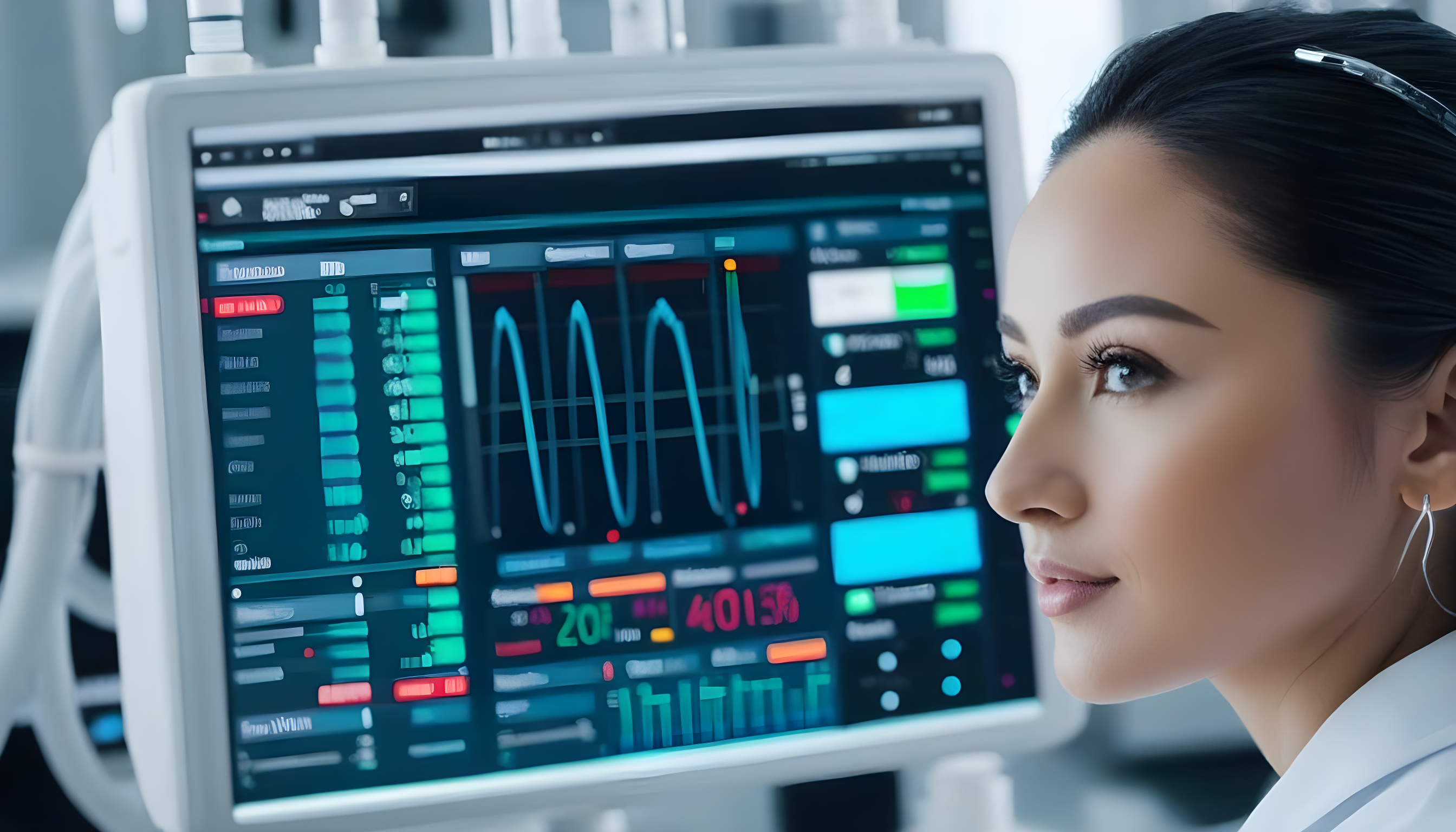Anesthesia, a critical component of medical practice, has undergone a transformative revolution propelled by Artificial Intelligence (AI). This technological paradigm shift is reshaping the landscape of patient care, from preoperative assessments to postoperative recovery. The integration of AI into anesthesia practices is not merely augmenting existing processes but is heralding a new era of precision, efficiency, and personalized healthcare delivery. Dr. M. Kathleen Shaw, an anesthesiologist and past president of the American Society of Anesthesiologists says “I believe that AI has the potential to make anesthesia safer and more efficient. For example, AI could be used to automate tasks such as medication dosing and data entry, freeing up anesthesiologists to focus on more important things, such as patient care. Additionally, AI could be used to develop new and more effective monitoring tools that could help us to detect problems early and prevent them from becoming serious.”
At the core of this revolution lies the application of Machine Learning (ML) principles, specifically Deep Learning (DL), within anesthesia practices. ML empowers systems to learn from patterns and experiences, while DL, a sophisticated form of ML, involves neural networks mimicking the complex structures of the human brain. In anesthesia, AI algorithms are trained on diverse datasets, encompassing patient demographics, medical history, and responses to anesthesia. This enables the algorithms to discern intricate patterns, facilitating personalized anesthesia planning and prediction of patient outcomes. Various AI algorithms contribute to the multifaceted applications of AI in anesthesia. Classification algorithms assess patient risk and predict outcomes, clustering algorithms aid in tailoring anesthesia approaches based on shared characteristics, and reinforcement learning ensures dynamic and personalized anesthesia depth. Natural Language Processing (NLP) algorithms facilitate extracting valuable information from unstructured clinical notes, contributing to a more comprehensive understanding of patient history and care.
Let’s delve into a scenario to illustrate how AI is revolutionizing anesthesia in a surgical setting, spanning the preoperative, intraoperative, and postoperative phases.
Preoperative Phase: Predictive Modelling and Optimization
Imagine a patient scheduled for a complex surgical procedure. AI, integrated into the preoperative phase, utilizes predictive modelling to assess the patient’s risk factors based on their medical history, demographics, and preexisting conditions. The AI algorithm identifies potential complications, enabling healthcare providers to tailor a personalized preoperative optimization plan. In this scenario, AI goes beyond identifying risks; it formulates a comprehensive plan considering the patient’s lifestyle, comorbidities, and nutritional status. The patient receives a personalized regimen encompassing exercise routines, dietary adjustments, and medication plans to optimize their health and resilience before surgery.
Dr. Jennifer A. Teoh, an anesthesiologist and pain physician says “I am excited about the potential of AI to personalize anesthesia care. By using AI to analyze a patient’s individual data, we can develop a more tailored aesthetic plan that is more likely to lead to a positive outcome. For example, AI could be used to predict a patient’s risk of postoperative nausea and vomiting, and then we could use this information to choose the right medications to prevent it.”

Intraoperative Phase: AI-guided Anesthesia and Robotics
As the surgery commences, AI plays a pivotal role in anesthesia planning. An AI-driven decision-support system assists the anesthesiologist by analyzing real-time patient data, including physiological parameters and responses to anesthesia. The system ensures a tailored anesthesia strategy, enhancing precision and safety. Northwestern University Feinberg School of Medicine is using AI to develop a system that can monitor a patient’s depth of anesthesia and provide real-time feedback to the anesthesiologist.
Moreover, robotics integrated with AI capabilities are utilized in anesthesia delivery. A robotic system, guided by AI algorithms, precisely administers anesthetic agents, adapting to the nuanced requirements of the surgical procedure. This not only ensures optimal drug delivery but also allows for remote monitoring, showcasing the potential for collaborative healthcare practices. The Mayo Clinic is using AI to develop a system that can predict a patient’s risk of developing awareness during surgery.
Postoperative Phase: AI-driven Monitoring and Rehabilitation
Following the surgery, an AI-driven postoperative monitoring system continuously analyzes vital signs, pain levels, and recovery metrics. This real-time assessment enables early detection of complications, and healthcare providers receive prompt alerts for intervention. This ensures a proactive and personalized approach to postoperative care. Massachusetts General Hospital (MGH): has a dedicated Surgical Artificial Intelligence and Innovation Laboratory that is developing AI-based tools for anesthesia. They are working on projects such as using AI to predict a patient’s risk of postoperative nausea and vomiting and to develop a closed-loop system for administering anesthesia.
In the rehabilitation phase, AI-based programs come into play. These programs, leveraging sensor technologies and machine learning, tailor rehabilitation regimens based on the patient’s progress. The AI system adapts exercises in real-time, optimizing the rehabilitation process and contributing to more efficient recovery. The Cleveland Clinic is using AI to develop a system that can personalize pain management plans for patients.

Says, Dr. David Gorski, an anesthesiologist and critical care physician, “I think AI has the potential to be a game-changer in anesthesia. It can help us to monitor patients more closely, make better decisions about drug dosing, and even predict and prevent complications. “
Dr. David Gorski cautions and says that it is important to remember that AI is a tool, not a replacement for human judgment. We still need to be the ones in charge, making sure that the AI is being used safely and effectively.
These scenarios illustrate how AI is not merely a technological augmentation but a revolution in anesthesia, fundamentally transforming each phase of the surgical process. As we navigate the challenges and ethical considerations, the potential benefits for improved outcomes, reduced complications, and enhanced patient satisfaction become increasingly evident. The responsible integration of AI in anesthesia holds the promise of shaping the future of patient care in profound ways.


